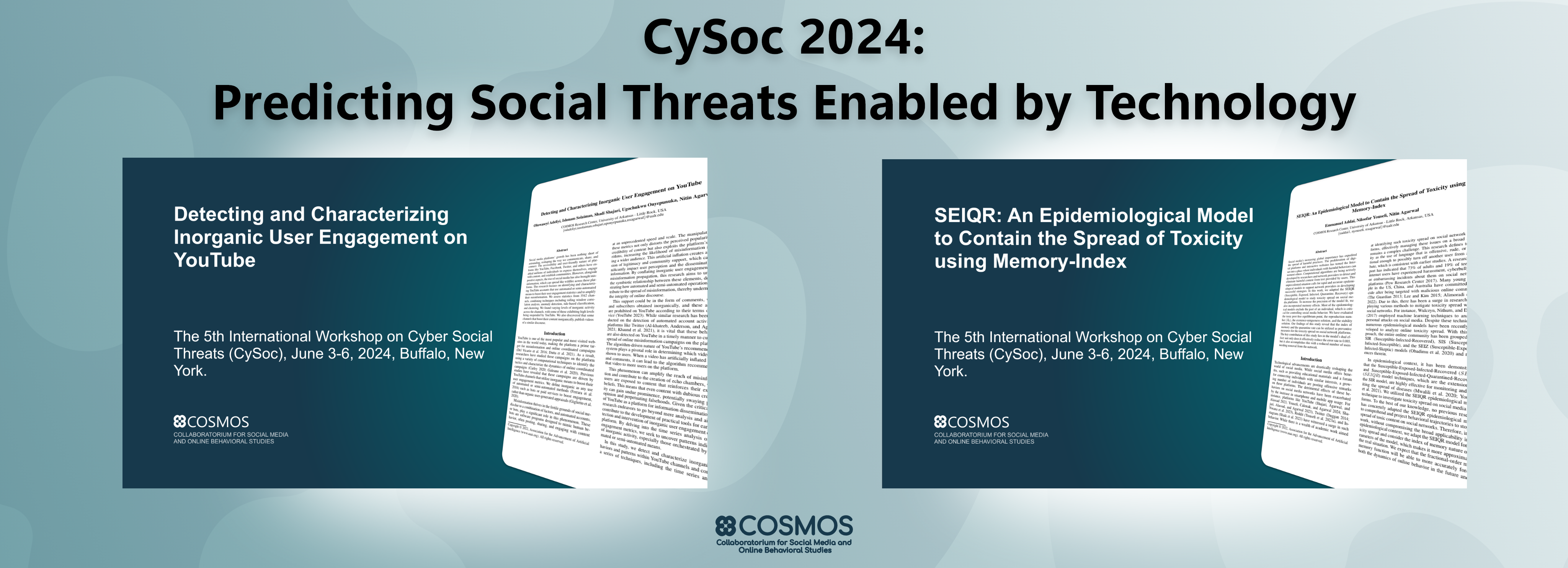The International Workshop on Cyber Social Threats (CySoc), co-located with the AAAI International Conference on Web and Social Media (ICWSM 2024), looks at discovering and mitigating cyber social threats. In other words, this conference is concerned with how social media platforms can negatively and detrimentally affect social contexts, that is, social threats enabled by technology. The range of topics that the conference features are thus quite extensive. This ranges from the complex landscape of generative artificial intelligence, both in its use and misuse, to the rise of online extremism and other pervasive social issues like harassment, cyberbullying, and hate speech. It also features research on how the digital realm can involve gender-based violence, human trafficking, and drug trafficking. More generally, the conference invites studies that look at how social media can negatively affect our society (such as promoting misinformation and disinformation) as well as our mental health and ethical concerns.
From 3 to 6 June 2024, the 5th CySoc conference was held in Buffalo, New York. There Oluwaseyi Adeliyi, Ishmam Solaiman, Shadi Shajari, Ugochukwu Onyepunuka, and Dr. Nitin Agarwal presented their research titled “Detecting and Characterizing Inorganic User Engagement on YouTube,” and Emmanuel Addai, Niloofar Yousefi, and Dr. Nitin Agarwal presented their research titled “SEIQR: An Epidemiological Model to Contain the Spread of Toxicity using Memory-Index.” The former study looked at the cyber threat of inorganic accounts and bots, while the latter study looked at the cyber threat of toxicity.
The first study focused on identifying and characterizing YouTube accounts that use automated means to boost their use engagement and to potentially amplify misinformation. To achieve this, their methodology combined four main approaches: rolling window correlation, anomaly detection, rule-based classification, and Principal Component Analysis (PCA)/clustering. Rolling window correlation looks at how different engagement statistics, such as views and subscribers, change in correlation over time. Anomaly detection and rule-based classification then used, respectively, models and algorithms to assess abnormal or inorganic engagement, based on changes in the rolling window correlation. PCA then reduced the data while minimizing information loss—PCA enabled the reduction in complexity of the data. Their predictions were then confirmed by the high number of suspended channels from the group of channels identified as having inorganic activity.
The second study focused on evaluating a new epidemiological model for toxicity that accounts for quarantined users: the SEIQR (Susceptible-Exposed-Infected-Quarantined-Recovered) model. Unlike traditional epidemiological models, this model incorporated memory effects, improving accuracy in predicting behavior by considering an individual’s past actions. The study evaluated several parameters, including the reproduction number (the number expressing the average number of cases transmitted from a single infected individual), the toxic post-free equilibrium point (an equilibrium that indicates toxicity or a disease has ceased spreading), and stability solutions. Using the model and adjusting the parameters, the authors determine the individuals to quarantine to reduce toxicity spread, carefully choosing the smallest number of individuals by determining the most impactful users. Their findings suggested that the memory index and quarantine rate can be effective measures for controlling toxicity, achieving a low error rate of 0.003 while minimizing user removal from the network.
Dr Agarwal said, “Together these and other efforts at COSMOS are developing ways to mitigate socio-cognitive attacks and strengthen community resiliency. We are grateful to the U.S. Army DEVCOM Army Research Laboratory, Air Force Research Laboratory, Office of Naval Research, National Science Foundation (NSF), Maulden-Entergy Endowment at the University of Arkansas at Little Rock, and Arkansas Research Alliance for supporting the research.”

